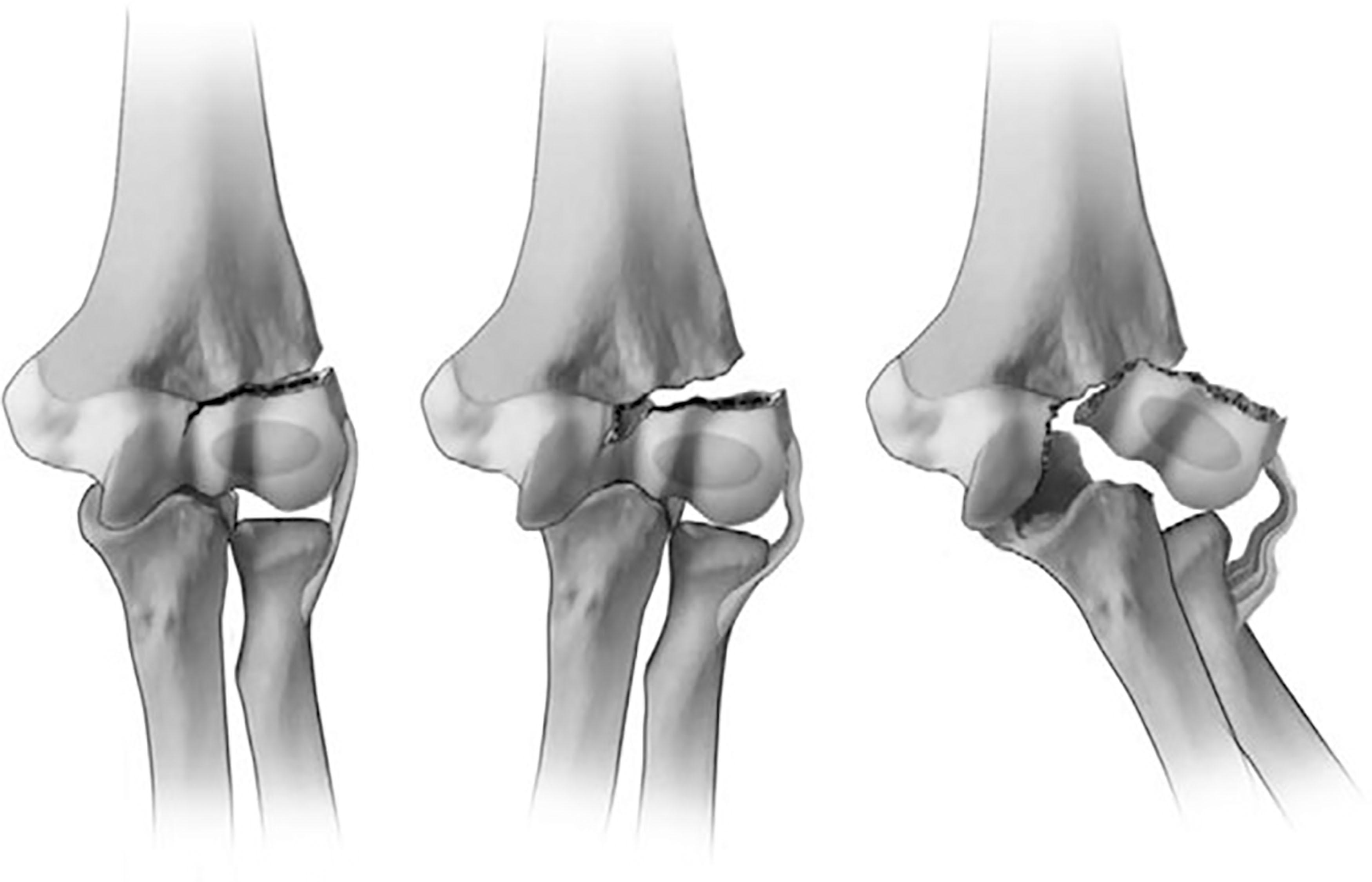Physical Address
304 North Cardinal St.
Dorchester Center, MA 02124
Lateral condyle fractures of the distal humerus represent the second most common fracture about the elbow in children, with the first being the supracondylar humerus fracture. These fractures represent approximately 10% to 20% of pediatric upper extremity fractures and occur at a mean age of 6 years. There are two distinctive features of the lateral condyle fractures that add complexity to the diagnosis, treatment, and complication profile: degree of initial displacement of the lateral condyle and intra-articular nature.
Numerous classification systems have been developed to characterize lateral condyle fractures. The earliest (Milch and Jakob ) systems were descriptive of the fracture morphology, whereas more recent classification systems have focused on treatment and complications (Weiss and Song ). The 2008 classification by Song et al. outlined five stages on the basis of degree of displacement (≤ 2 or >2 mm), fracture pattern as it relates to gapping or rotation, radiograph view utilized to view fracture, and fracture stability. The proposed stages were utilized to propose treatment; for example, a stage 1 (≤2 mm displacement, fracture line does not extend into epiphysis, stable fracture) is appropriate for long arm cast immobilization. A stage 5 fracture (>2 mm displacement, rotated fracture fragment, unstable fracture) is recommended for operative treatment with surgical fixation ( Fig. 3.1 ). The 2009 Weiss et al. classification system comprises three types: type 1 is displaced less than 2 mm, type 2 is displaced 2 mm or more with a congruent articular surface, and type 3 is 2 mm or more displaced with an incongruent articular surface ( Fig. 3.2 ). Type 3 fractures were associated with higher incidence of overall, major, and minor complications as compared to type 2 fractures, and thus the Weiss system is frequently cited in recent literature when reporting on complications.


The complication rate for lateral condyle fractures has been reported to exceed 25%. The list of complications includes, but is not limited to, preoperative complications (incorrect diagnosis, delay in diagnosis, secondary displacement), perioperative complications (loss of reduction, osteonecrosis), and postoperative complication (arthrofibrosis, lateral spurring, delayed or nonunion, malunion with concomitant angular deformities, and tardy ulnar nerve palsy). The common occurrence and wide-ranging list of complications are multifactorial in etiology.
The high rate of complications of lateral condyle fractures warrants special consideration. The purpose of this chapter is to help clinicians avoid such adverse perioperative outcomes by being cognizant of the following principles:
Lateral condyle fractures have a higher complication profile compared to other pediatric upper extremity fractures;
The first difficulty with these fractures is correct diagnosis and classification, especially as it pertains to intra-articular fragment displacement and rotation; and
These patients require close outpatient follow-up in order to monitor impending adverse outcomes for both nonoperative and operative treatment of lateral condyle fractures.
Become a Clinical Tree membership for Full access and enjoy Unlimited articles
If you are a member. Log in here